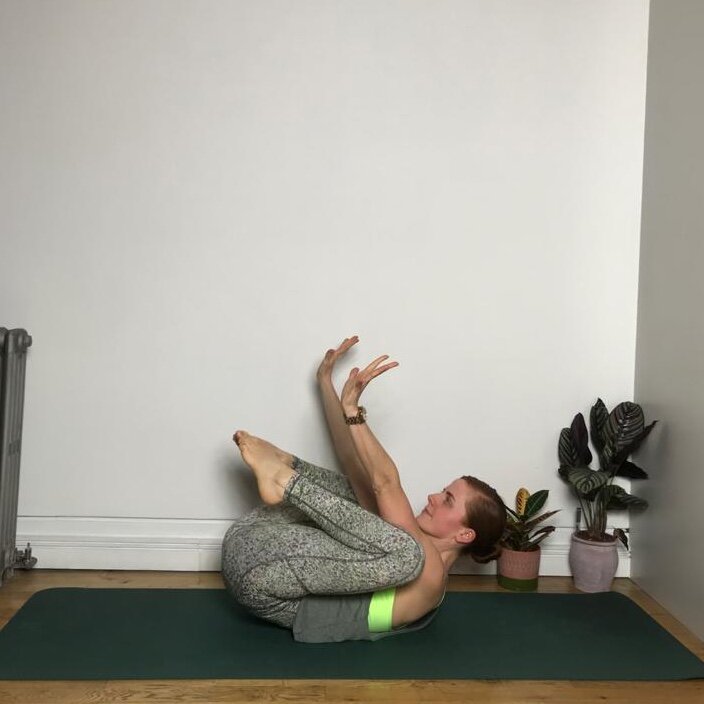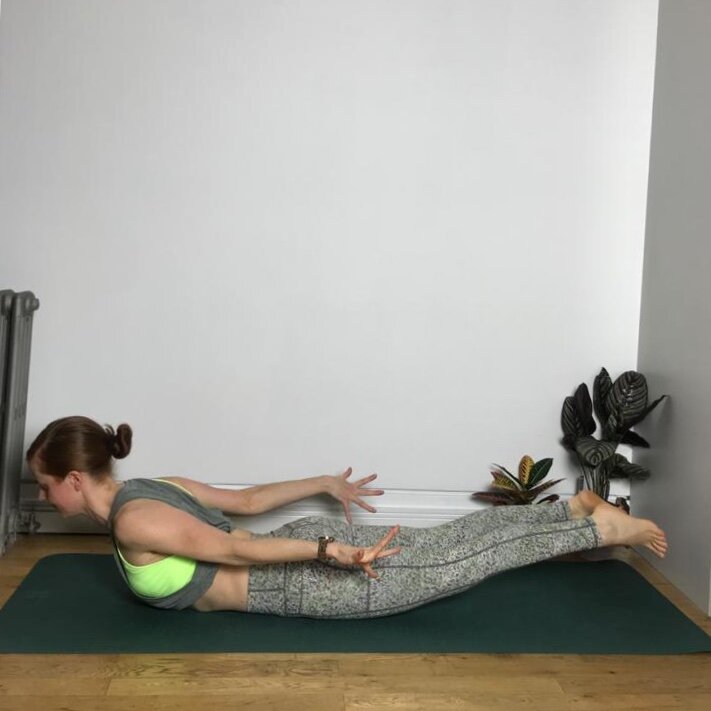yoga for core strength and awareness part 5: your front
Olivia Marley
This blog has been a little quiet for a while – I let coronavirus lockdown throw me off my normal routine and haven’t been writing the blogs that normally accompany our practice in class each week. But I’m vowing that from this week I’m going to keep up with it again…. And to catch up will be writing a blog post a day this week! So to round off our study in March of your core we had one more area left to cover: your anterior (or front side of your) core. For our purposes you can think of your anterior core as the stuff that wraps you up into a little ball shape by bringing your chest and thighs towards each other (so the front of your abdominal circumference and your hip flexors).
I chose to work towards crow/ crane pose or bakasana to make students feel this area of their body work. You can see in the last photo here that the shape of this arm balance means tucking your thighs up near your chest, so asks your body to switch on your anterior core strongly. A technique I use all the time (that I picked up from my teacher Jason Crandell and that he got from his teacher, Rodney Yee) when teaching more difficult poses like this one is to get students to practice making the shape of the pose a less challenging way round. This is great for students because they get more than one opportunity in class to understand the shape of a pose and how it feels. Repetition is key to help people learn. And, from a teacher’s perspective, it’s a tool for making sure that my students feel this area of their core working even if they can’t yet balance on their hands in bakasana. So, in order of how this poses appeared in my class sequence:
Bakasana on your back
This posture teaches the ball shape of the pose, and in this version (with your knees outside your upper arms) teaches the action of squeezing your legs in against your arms. It also (in my body at least) instantly makes you feel exactly what your anterior core feels like when it switches on strongly to lift your chest away from the floor!
Plank with one knee drawn into your armpit
In this pose you’re repeating that drawing my knee into your chest shape, and also practising pointing your top toes and drawing that heel into your bum (which is a cue I’ll give students later for bakasana on their hands). It also adds in having weight on your hands and pushing the floor away from you with your arms.
Bakasana on your bum
Another version of the same shape. In this version I’m cueing students to try and sit tall, which will be firing up the front of their hips (aka their hip flexor muscles), and press their arms out and legs in.
Bakasana on your hands
The same shape repeated, in what (for most students) is the most challenging way round. So your body is already warmed up: - Anterior core (abdominals and hip flexors) to make that ball shape - Hamstrings and calves to bend your knees and bring your heels towards your bum - Arms pushing the floor away like we practised in plank. Plus this version introduces the extra challenge of trying to balance on your hands. If any of you/ your students have any wrist or shoulders issues you also have the on your back or on you bum versions to choose from, which you will already have experience are in no way an easy or cop out option!
Please comment below if you have any questions!









